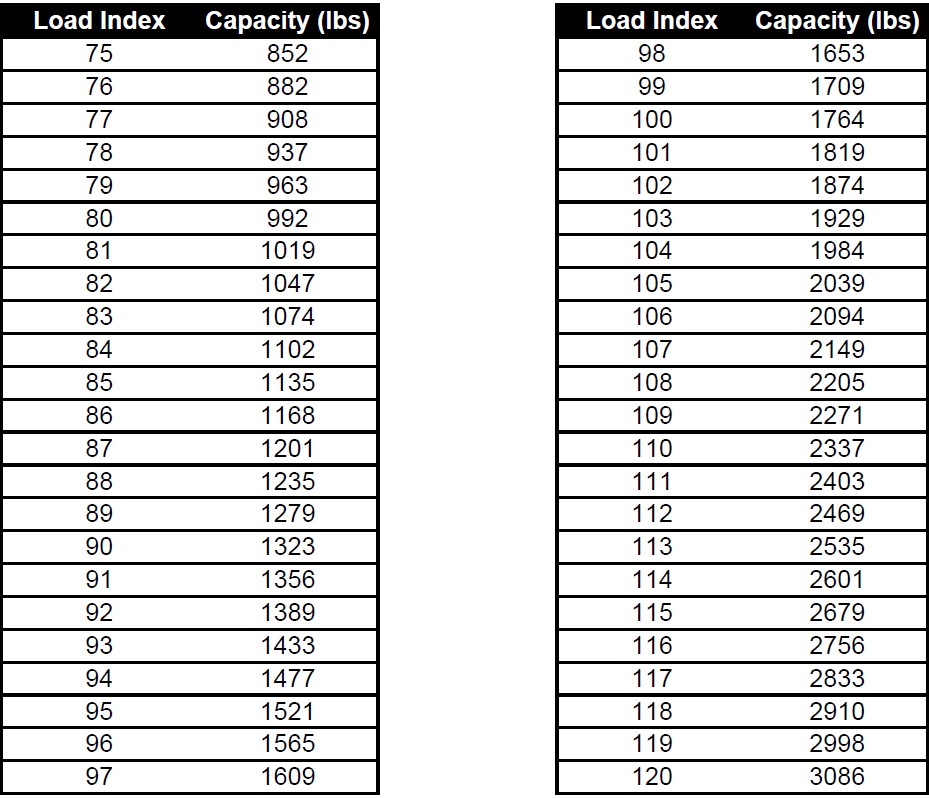Tire Load Indexes and Speeds: What You Need to Know
Rev up your knowledge of tire load indexes and speeds, because we’re about to dive into the exciting world of tire safety and performance! In this guide, we demystify the secrets behind those mysterious numbers and codes on your tires. From load indexes that determine how much weight your tires can handle to speed ratings that reveal their performance at high velocities, we’ve got you covered.
Get ready to roll with us as we explore everything you need to know about tire load indexes and speeds.
Understanding Tire Load Indexes:
So what are load indexes?
These mysterious numbers hold the key to understanding your tires’ weight-carrying capacity. Load indexes go up to 279, but for most passenger car tires, it is in the range of 75 to 105 (although some can handle even more!).
So, let’s take an example: a tire with the size of 235/55R17 99H has a load index of 99, meaning it can carry a load of 1,709 pounds. The higher the load index, the higher the tire’s capacity to carry weight. It’s important to match or exceed the load index of the original equipment tire to ensure your tire can handle the intended weight of the vehicle at a minimum.
So, keep an eye on that load index, folks, because it’s what keeps your tire carrying its weight with confidence. Refer to the below guide for more info.

Speed Ratings
If your tires could talk, they would say “Hey, I’ve got a need for speed, but let’s not get too crazy!” The speed rating is like the tire’s speed limit—its optimal and safe speed before things start getting shaky. So, the higher the speed rating, the more control and handling you’ll have when you’re zooming down the highway.
Back in the day, tire manufacturers realized they needed to keep up with bigger, better tires, so they created speed ratings to ensure safe performance. Originally, we had the “Unlimited V” category, which was anything over 210 km/h (130 mph). But then they introduced the “Limited V” at 250 km/h (149 mph) and even added the almighty “Z” speed rating for the absolute top speeds. (Psst… for the true speed demons, always check the manufacturer’s guidelines for the maximum speed of Unlimited Z tires.)
Finding your tire’s speed rating is pretty simple. You can search for it in the owner’s manual or the driver’s side doorjamb. But if you’re eyeballing your tire sidewall like a pro, you’ll spot the speed rating as the last item in the character sequence of the tire’s size code. For example, if you see something like 2015/60R15 91V, that “V” means it’s a V-rated tire that can handle speeds up to 149 mph.
Here is another handy guide for you:

